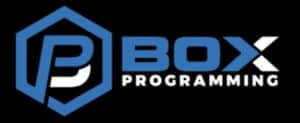As the CF model continues to evolve in order to stay relevant and survive in an ever-changing fitness landscape, many of the training methods and styles that crowned CF king of the fitness industry are being phased out of group programming.
As it’s been said, what got you here won’t get you there. And this has become the current day reality for “traditional” CF training.
The newest model of CF lacks many common movements found in more traditional CF programming.
And the reason for their exclusion is simple, many of the traditionalist exercises are too complex are a mismatches for the client’s goals and needs. A simplified program becomes more effective in eliciting the desired training effect while keeping clients happier and healthier working towards their goals.
If you want to train harder, stay healthier and achieve superior results, it’s time to ride the wave and evolve the traditional CF training model to better serve your goals, just as my 300+ CF Affiliates and 40,000 clients have over the last 3-years.
Yes, you’ll incur some pushback at first, but let’s remember that results are, and will always be, KING. Here are the top 20 smarter alternatives for traditional CF exercises you should be made to upgrade your programming.
#20 Swap barbell snatches for dumbbell snatches
The dumbbell version of the hang snatch is incredibly easy to teach and much easier to execute when fatigue sets in. Unlike snatch variations that use a barbell, there is far less chance of injury.
Plus, it’s much easier for the majority of your athletes to develop proficiency at this movement, which can be used for explosive strength work.
#19 Swap pull-ups for horizontal row variations
Too many folks have weak upper-backs, yet many gyms expose them to things like kipping and dead-hang pull-ups prematurely, without even considering the horizontal row.
This is ass-backwards. Build their upper-backs FIRST with a healthy dose of horizontal row variations WEEKLY. This is not to say that the pull-up is not important.
However, don’t make the mistake of disproportionately stressing vertical pulling over horizontal rowing. Horizontal rowing should be programmed at least 2x more than vertical pulling.
#18 Swap muscle-ups with direct arm work
I don’t have to make much a case to tell you that 99% of your clients will not benefit from muscle-ups, but what they will benefit from is direct arm work for both biceps and triceps.
This work is easy to include in your programming and should serve as a mainstay in your plan.
#17 Swap free squats with box squats
Squat variations have their place, but you’ll find the majority of your clients will benefit more from the box squat than the classic back squat. The reason being, we can accomplish more than a few tasks by using a box to improve strength, power, and mobility, not to mention targeting those areas where most of your clients are weak: hips, gluteals, and hamstrings.
Additionally, the box squat is much easier to recover from and is more user-friendly to those with knee issues. If your clients still aren’t great at squatting, the box squat can also serve as a teaching tool.
#16 Swap barbell conditioning for Sledpushes
If you’re looking for an easier way to have more people in your class feel included, the sled push is it. Competitive CFers may love the specificity that barbell conditioning provides, but the sled push can attack the same energy sources, is easier to coach, will get more people included who may not be great with cycling a barbell, and is far less likely to injure someone.
#15 Swap the conventional deadlift for the sumo deadlift
All the bro’s love the conventional deadlift. But here’s the thing: the sumo deadlift brings the bar closer to the body, creating a better gravity line.
Because of this, there is significantly less risk of a lower-back injury. (In truth, this movement is actually closer to a squat than it is to a deadlift.) The sumo deadlift allows athletes to utilize more of their glutes, adductors, and hips, similar to the box squat.
#14 Swap high-rep finishers for band work finishers
Band work is easy to teach and perform, and the return on investment is huge! It can provide the much needed soft-tissue work your clients need as well.
In our programming, it’s common to find a 100-200 rep post-training regimen of banded leg curls, pushdowns, and pull-aparts.
#13 Swap conditioning everyday for strength only days
Your clients don’t need to lay dead on the mat after every single workout to make gains. In fact, they’ll likely be challenged more by a “strength only” day.
These should consist of no more than four exercises that allow for proper ramp-up sets before the actual work sets take place.
#12 Swap high-rep bilateral work for sled pull variations
Similar to barbell conditioning, sled pull power-walking allows us to crush the posterior chain, where most are weak, with zero risk of injury or delayed onset muscle soreness.
Additionally, we can train the oxidative ability of fast-twitch fibers with the sled, which will translate to greater capacity in other events such as a 5k run.
#11 Swap anaerobic workouts for aerobic workouts
Your clients need less “death workouts” and more sustainable “breathing” workouts. People have enough stress outside the gym, so your high-intensity work needs to be properly planned.
The truth is that aerobic work should make up the bulk of your plan. One way to ensure that people are monitoring their level of effort is by removing the clock or the score of a particular workout.
This will reduce the perceived stress of having to compete against their peers and allow folks to focus on quality vs. quantity.
#10 Swap partner workout Saturday’s for Strongman Endurance Saturday’s
Partner workouts are a mainstay in our programming, but more and more gyms are arming themselves with strongman equipment.
This is a great change for your clients and will help build their GPP, endurance, posture, and grip. Strongman workouts can consist of 3-5 stations that your clients rotate through at their own pace.
#9 Swap scored workouts and perform more untimed/unscored workouts
I’m all for keeping track of metrics and while competition is certainly an advantage with CF it can also be seen as a disadvantage.
Reason being people will sacrifice their bodies for another rep or to simply beat their friend in a workout – I’ve seen people do some pretty crazy shit for an extra rep. The solution?
Program workouts regular that have no measure and allow people to focus on perfect movement. This also allows you to better manage the stress of our program design.
#8 Swap the barbell push press with the dumbbell push press
If you prioritize gymnastics work it’s likely you’ve probably heard complaints of nagging shoulder pains from your clients.
Instead of exacerbating this conditioning opt for the DB variations for your overhead work which allows using a “neutral grip” which tends to be more shoulder-friendly for most people – the shoulder is centrated and allows for more development of the triceps.
#7 Swap the overhead squat with the goblet box squat
Over the last 15 years, I’ve seen more people unable to perform the overhead squat effectively vs. people that can actually safely and efficiently perform this movement.
On the other hand, I’ve yet to encounter one person that I could not teach the goblet squat to in less than 5 minutes. Again, if we’re trying to encompass the needs of the MAJORITY of our clients the overhead squat should take a back seat to the goblet squat.
Moreover, the goblet squat is an effective teaching tool for newbies as the weight acts as a counterbalance.
#6 Swap bilateral work for more unilateral work
To be clear, I’m not saying we are going to completely replace bilateral work with unilateral work, but we are going to make unilateral a priority so we can actually mitigate the risk of injury not to mention add lean muscle mass – this will organically improve our bilateral variations.
It’s all too common in CrossFit to see severely imbalanced people squatting or pulling with almost zero emphasis on improving unilateral strength. You can’t build a house without a foundation so this work should be done consistently.
#5 Swap overhead press for the landmine press
It’s common to see overhead work at a box, but less common to see horizontal pressing or landmine pressing variations. There is TOO MUCH overhead work as it is, but this can be remedied by changing the plans of the body with the landmine press.
The landmine press is more effective at developing the triceps, where most are lacking, and can actually teach athletes how to rely on their triceps/lats with pressing movements and not their front deltoids, but also is a hell of a lot more shoulder friendly and doesn’t allow people to compensate at the lumbar spine for range of motion.
#4 Swap rebounding box jumps for step-down box jumps
Eliminate the chance of a soft-tissue injury, (not to mention someone’s gnarly shin injury getting posted on social media,) by making the “step-down” mandatory.
Not only does this drastically reduce the risk of injury, but it can help keep your clients’ heart-rates at bay during a conditioning piece, thus allowing for better work output.
#3 Swap Handstand Holds for Overhead Carries
The overhead carry is a great way to build deltoid capacity, not to mention the core and aerobic systems. Many of your clients have zero desire to be inverted, and with a wide array of ability-levels in your box, you may have some who cannot be inverted for health reasons. Luckily the overhead carry with either a dumbbell or kettlebell can be done by just about anyone.
#2 Swap GHD Sit-ups for Front Rack Carries
Our opinion is that the GHD situp should be banned from group fitness forever. The math is simple: Excessive range of motion of the lumbar spine + dynamic movement = high risk of injury. Instead, a front rack loaded carry can effectively train anterior core control and actually teach folks how to brace their abs effectively.
#1 Swap kipping pull-ups for strict pull-ups
Look, this debate has been beaten to death, but no one should be kipping until they can perform a strict pull-up. Would you put a 600 horsepower engine in a Prius? If you did, you’d definitely F that car up, and you’d look like an asshole in the process. Build your clients’ capacity first, and THEN allow them to earn the right to perform higher-skill movements like kipping pull-ups.
Bonus: swap burpees for squat thrusts
The burpee is a globally demanding movement that can train the cardiovascular system quite effectively even though plenty of people want to hate on it.
I get it, excessive extension of the lumbar spine which is a legitimate concern which makes the squat thrust a great alternative that will elicit a similar response sans excessive lumbar extension.
I don’t think the burpee will ever be completely removed from CF programming, but it’s important to be smart with its inclusion in your program design. We include the burpee 3-4x a month with a wide variety of volume options for varying abilities – the squat thrust always being a viable scaling option.
The results will speak for themselves
We could continue this list if we really wanted to, however, these swap-outs are certainly the most important in our plan. Give them a try for 12 weeks and you’ll see what I mean.
Oh, and your high-skill movements will improve, even though we haven’t performed them as much. The Improved strength and symmetry gained from these substitutions will carry over to many other areas of our fitness.
And if you’re ready to trade the barbell snatches in your direct arm work – schedule a call here.



